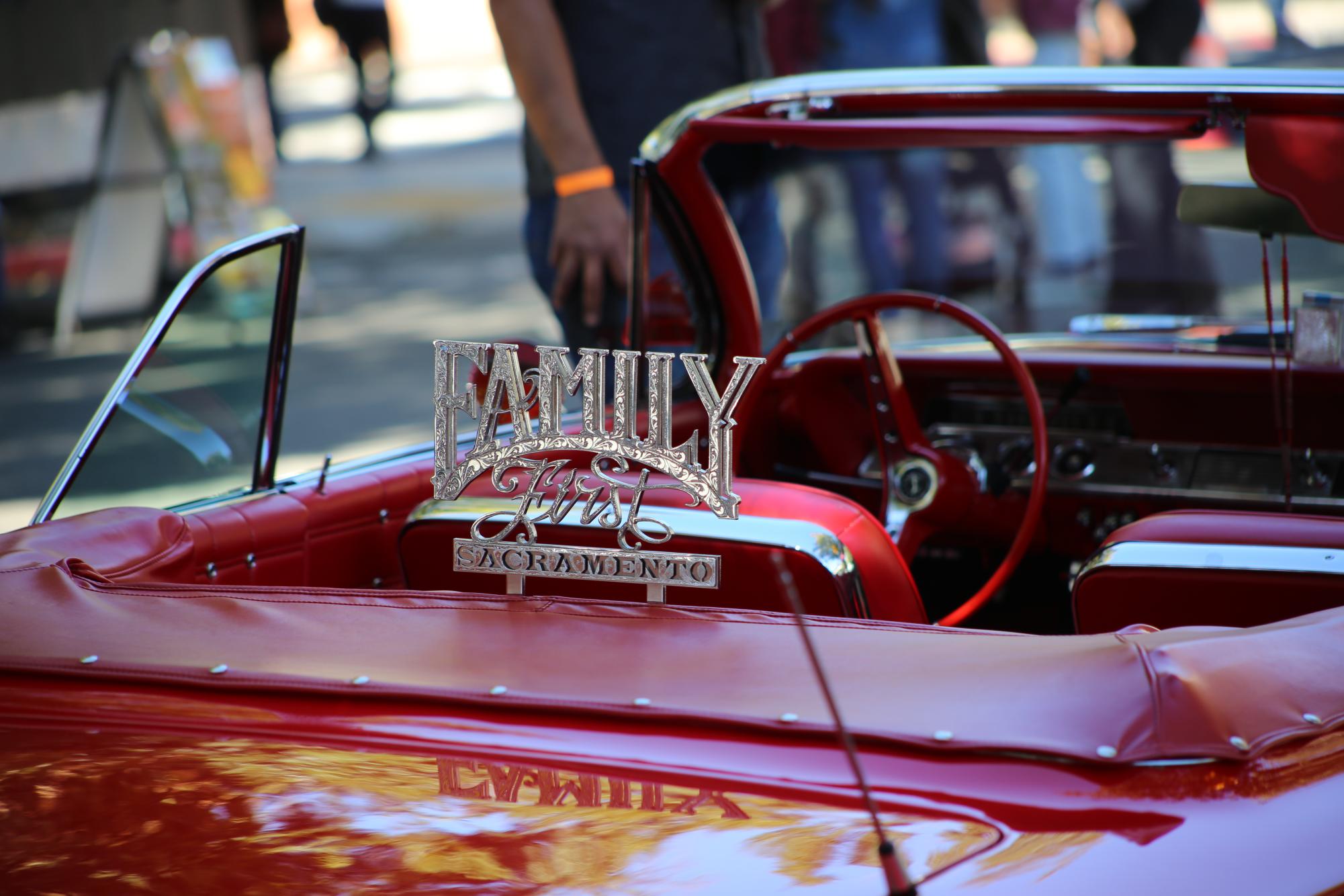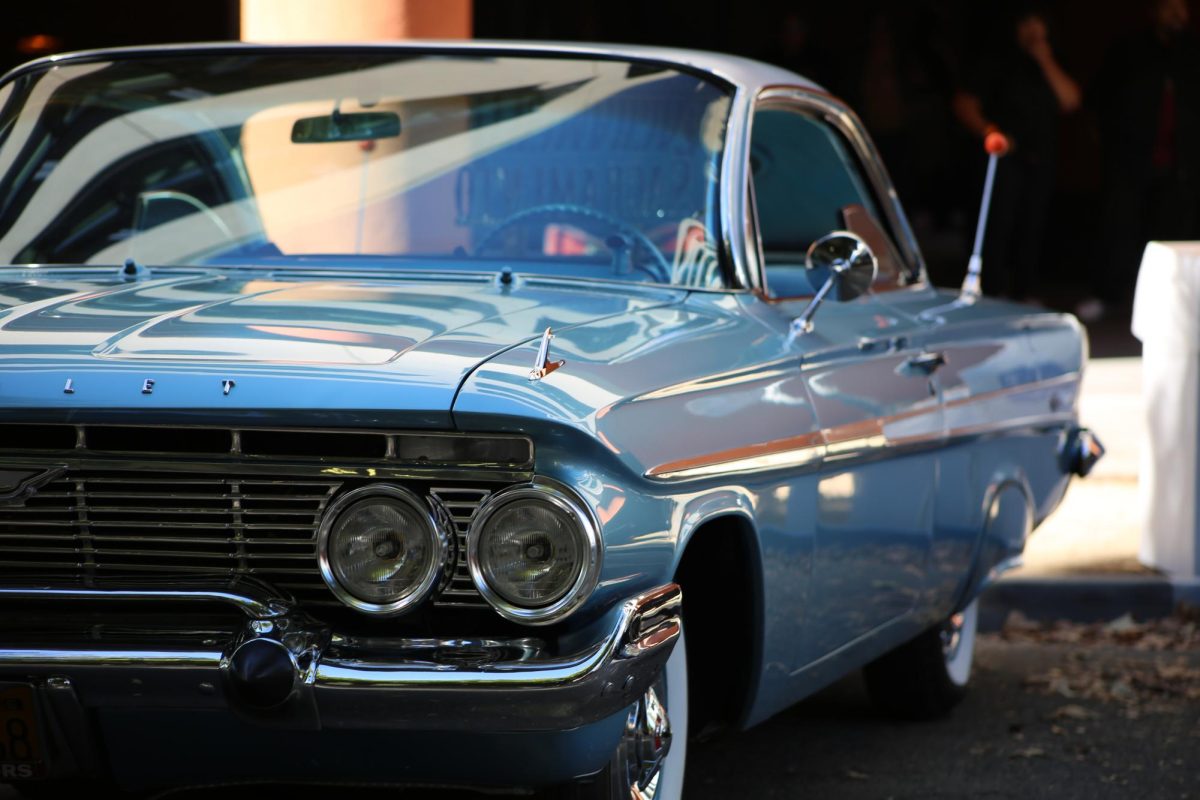Editor’s Note: The usage of Hispanic, Latino/a/e/x and Chicano/a/e/x is in accordance with the preference and language of the sources and/or organizations included in this story.
Two years ago, Lorraine Quinones and her family were cruising down east Los Angeles’ infamous Whittier Boulevard in their two-toned, baby blue 1957 Chevrolet Bel Air, when they noticed an alarming amount of police-issued barricades lining the streets with “CRUISING PROHIBITED” signs in thick black letters.
A street once hailed as the birthplace of lowrider culture had turned into a growing turf war with law enforcement, who began threatening the riders with impound notices or jail time.
Quinones, a member of the California Lowrider Alliance, knew this signaled the escalation of a 30-year battle against the lowrider community in California.
“I just felt that it was so wrong that we weren’t able to cruise in our own community, on a strip that is known for cruising. It’s the pilgrimage of cruising,” Quinones said.
Lowriders and the act of cruising have been an instrumental piece of Chicano culture in California since the 1940s and 50s, following the post-WWII era when hot rods became a staple of mainstream cinema and pop culture.
Mexican Americans wanted to challenge the mainstream ideals and instead opted for cars that had the “low and slow” appeal that would distinguish themselves from White Americans on and off the road.
RELATED: ‘It’s my roots’: former migrant field worker becomes college student
Lowriders were a staple of many southern and growing northern California streets until 1958 when California Vehicle Code 24008 outlawed any part of a car to be below the bottom of its rims.
As a solution to the vehicle code, lowriders began installing hydraulics on their cars so that they could switch over to the new standard around law enforcement and avoid getting into trouble.
This angered the police and California lawmakers who took it a step further by banning the action of cruising altogether so that any form of slow driving was punishable by law as well.
As more cities across California placed a ban on cruising, many lowriders still hold fond memories of cruising around local parks with friends before restrictive legislation.
Oscar Acosta, a longtime lowrider from Modesto, recalls hanging around town with his friends and viewing their cars as generational passion projects.
“A lot of these cars, we were able to fix it the way we like, like our style, and I think it just has to do with a lot of pride,” Acosta said.
The hydraulics and unique artwork made the cars more noticeable to law enforcement and the showy nature of these hydraulics attracted negative attention from onlookers who categorized these cars as unsafe and too flashy to be on neighborhood streets.
Sacramento Lowrider Commission President Francine Mata talked about how these stigmas and laws made it easier for minorities to have a target on their back from law enforcement, during a time when tensions were already high.
“I believe in 1988, when this came into effect, there were almost 50 to 100 people that got arrested or cited for the organizations in the Black and brown communities,” Mata said.

However, for many members of the community, lowriding is much more than a show of heavy hydraulics and booming stereo systems that echo through the long Los Angeles streets.
The candy-colored cars are an artistic expression, an outlet for those who work 9-5 to use as a way for them to connect with one another and their cultural identity.
“We do it for family bonding time, nurturing our culture or for artistic expression,” Quinones said. “There’s so much beauty in all the cars, whether it be through the craftsmanship of building it or the artwork involved in it, they represent so much.”
As many local car clubs were created during the 1970s, lowriders used their weekly meetings as places for community service events. Often holding fundraisers, the car clubs worked to rally support for the United Farm Workers labor union.
The lowrider community took advantage of their close-knit relationships with other car clubs across the state to forefront many political movements for Mexican Americans.
Delia Velarde, a member of the Sacramento Family First Car Club talks about how even now lowrider events are, above all, a chance for the community to come together in support of one another.
“My daughter, she just led a ‘family first’ breast cancer awareness event,” Velarde said. “The first lady lowrider to throw an event for breast cancer awareness.”
Velarde said all of the money raised would be going to a local charity and that this was only the beginning of a long list of ways to give back to the community.
She stressed the importance of using these events as a way to teach the younger generations about how important it is to give back and respect one another despite the disrespect they’ve faced for many years.
“We love people, we love what’s right and we hate what’s wrong,” she said. “We are all just about trust and loyalty.”

Seeing how the lowrider community has evolved from neighborhood car shows to hundreds of Latinos using their platform to show support for national movements is why people like Quinones and Mata worked so hard to help repeal the ordinance once and for all.
Following her own run-in with law enforcement cracking down on the most celebrated areas for lowriders, Quinones created a petition that would encourage car clubs from across the state to come together in support of repealing California Vehicle Code 24008.
“I had created a petition for Whittier Boulevard that then gained a lot of traction,” Quinones said. “People found it who agreed that the ordinance in place was discriminatory and a violation of our first amendment rights to travel from point A to point B, without any harassment.”
Mata said advocacy on her part started when they got locked out of Miller Regional Park in Sacramento in 2022.
“It’s been almost two years that we’ve done this and we’ve seen the importance of the need to fight for this because we’re just ordinary people,” Mata said.
After years of community members campaigning and speaking out, Gov. Newsom signed Assembly Bill 436 into law on Oct. 13, ridding California of the codes that banned cruising starting Jan. 1, 2024
Being able to openly celebrate such an important piece of Chicano history shows how far this community has come and its determination.
To this day, members of car clubs all over the state just want people to understand that lowriders are an art form and cruising is nothing more than a means to connect with others.
“Our elder lowriders, I always looked up to them and it was a sign of strength to get through stuff, seeing them build cars,” Mata said. “We call our lowriders a work of art because it tells a story.”
Today, lowriders want the public to know that their fight is not specific to the Mexican American community, known as ‘La Raza,’ but for all people. The repeals and the parties are for anybody who wants to be able to openly express their individualism in society.
“This is not just for ‘La Raza’ style, that cruising is only for them; it’s for all Raza, all types of people, all types of race,” Acosta said.




